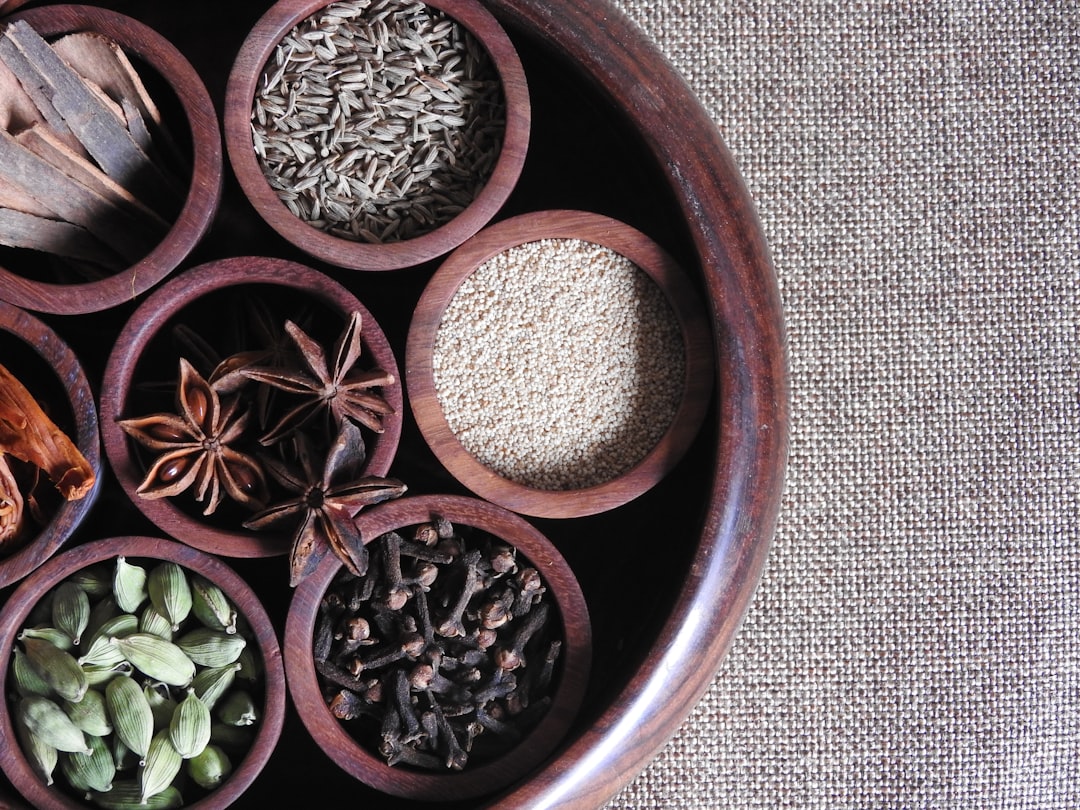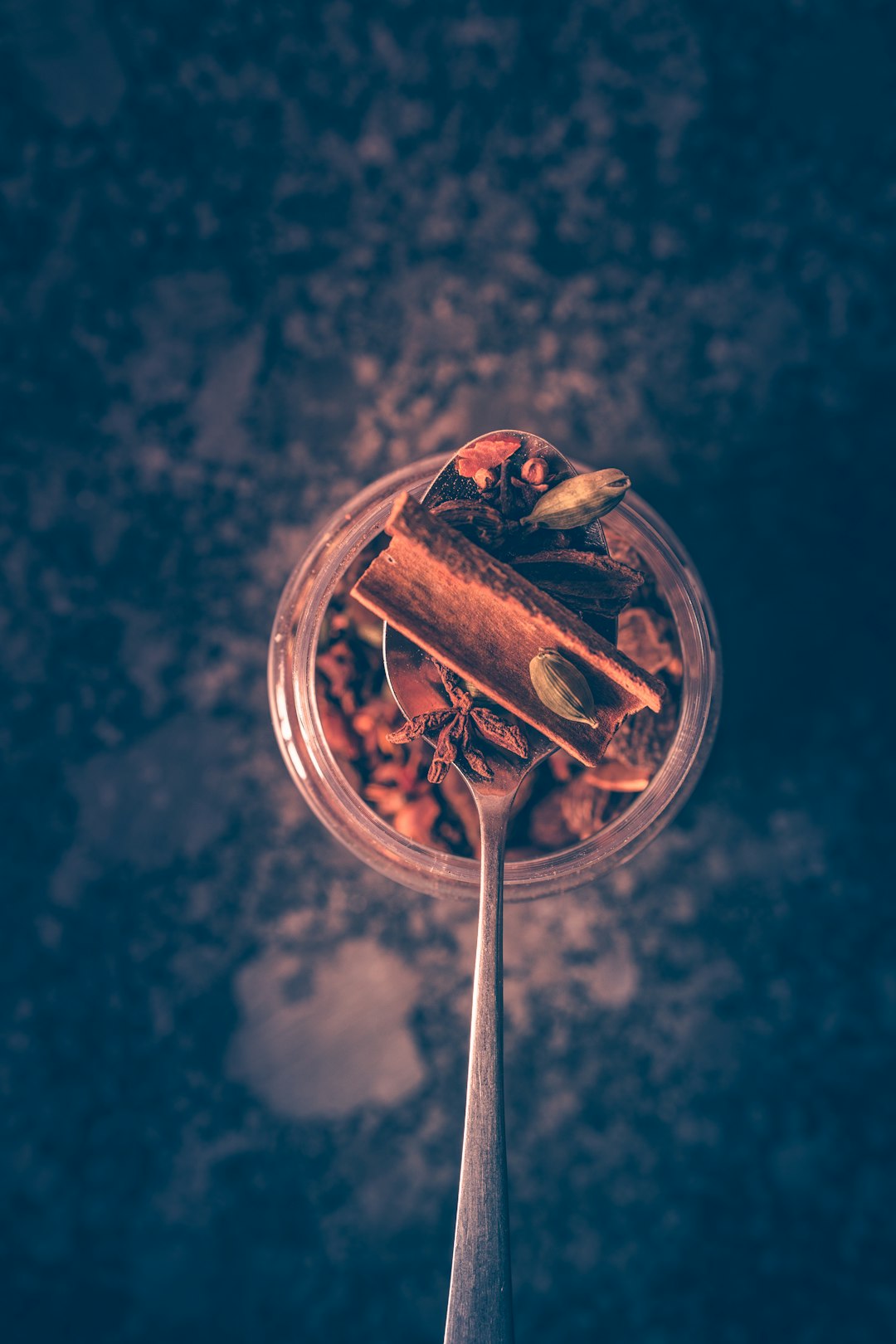Garam masala, the key to flavourful Indian cooking.
From curry to tikka masala to biryani, garam masala makes all your favourite Indian dishes lip-smacking.
When it was time to prepare for my wedding trousseau, Mum wanted to gift me a masala dabba.
As an eight-year-old I spent many evenings in our blue-tiled kitchen watching mum cook.
She’d come home from work, put down her purse and wash her hands and head straight in to prepare dinner. Her back turned to me, she would be chopping a bunch of vegetables or stirring fresh coriander into a simmering pot of curry and some days, spluttering mustard seeds in hot ghee.
Her masala dabba was her most treasured item in the kitchen.
A round steel box containing seven bowls for the seven spices of your choice, the masala dabba is to the Indian kitchen what a microwave is to the western kitchen: a necessity.
If you ran your hand over the lid of mum’s masala dabba, you would find the top edge where her name was engraved along with the year she got married. That box had come with her as part of her wedding trousseau.

It had a glass lid so you could peek at the spices inside and seven steel cups that she religiously topped up every weekend. In our house, mum’s masala dabba had turmeric, red chilli, cumin-coriander, garam masala, mustard seeds, dhansak masala and cumin seeds. The first four spices went into practically everything Mum cooked, mustard and cumin were reserved for her dals, and the dhansak masala was for Sunday’s mutton dhansak.
I had more “modern” ideas for the things I wanted in my trousseau and asked her to buy me the fancy Briscoes rotating herb rack instead.
Wedding over, I unpacked my herb rack and, to my mother-in-law’s chagrin, kept my herbs on display near the stovetop while the everyday spices stayed hidden in their jars inside the pantry.
I learned quickly that it was a bad idea.
Most of the recipes Mum suggested I try started by heating fat – oil or ghee – then adding small amounts of spices quickly, so the mustard seeds pop, cumin seeds toast, and the turmeric powder loses its raw edge without burning. All of this was very hard to achieve while trying to open six different jars!
Our cook Chaya – who had the temperament of a Michelin-starred head chef – humoured me for about 10 days before insisting that I buy a masala dabba.
My biggest issue with the box was the tiny bowls you had to keep topping up every few days. It was Chaya who taught me that those bowls were small by design. Spices lose their flavour and aroma rather quickly, especially ground spices. This practice of refilling a small amount at a time kept the spices fresh.

Once I became a masala dabba convert, there was no going back.
I’d go to my friend’s houses and peek inside their spice boxes – an effective way of judging whether we should be friends or not. My Punjabi friend stored fenugreek leaves, black cardamom and cloves inside her box to add smoky heat to her chana masala and dhaba curries. In contrast, my South Indian colleague had fennel seeds, nutmeg and green cardamom in her box, while my business partner from Kolkata had panch phoron (a Bengali five-spice mix) in hers.
Our cook Chaya – who had the temperament of a Michelin-starred head chef – humoured me for about 10 days before insisting that I buy a masala dabba.
So today, in my pantry, I have three – a fact that makes my mum laugh a lot. My first box stores all the essential blends I need for my everyday cooking. My second box I use for all my “phodni” or tempering spices like urad dal, whole chillies and dried curry leaves. The third box is for the regional spices I use once in a while. My three-year-old regularly runs away with that box to his play kitchen to make weird wooden vegetable “curries” I’m forced to eat. I’m happy he’s adding spices to them, though, and not sticking to oregano and rosemary like his mum once did.
The spices inside a Masala Dabba may vary from home to home, but the one spice that’s almost always found is garam masala. If you’ve ever ordered Chicken Tikka masala, Tandoori chicken or Biryani, chances are your dish was made with garam masala.
A sprinkle of freshly ground garam masala can be the difference between a bland tasting or flavourful chicken curry. Sure, you could buy a packet from an Indian store but often the packet has sat on the shelf for so long that it’s lost its flavour and warming aroma.
What is garam masala?
Translated, garam masala means “hot spices”. The spice blend is rumoured to have originated in Northern India, where it was added to food cooked during the cold winters to warm the body.
The key to a good garam masala is striking the right balance between the diverse flavour notes. It’s a piquant balance of earthy bay leaves and cumin, woody coriander seeds and cloves, sweet cinnamon, and smoky cardamom that’s offset with a hint of pepper. Once the spices are toasty and exude a heady aroma, they are allowed to cool down before being ground into a slightly coarse, dark brown powder.

Used sparingly, it can add a touch of opulence to just about anything you cook. Sure, it’s traditionally used in a curry or a vegetable stir-fry or a paratha stuffing, but I often find myself adding it inside my marinades, using it as a rub with ghee for my lamb roast, and sometimes even sprinkling it on fries and salad dressings! You could even add a tiny teaspoon of garam masala to a pan of cooked, buttered rice to create a rice meal with a heady aroma.
Garam masalas vary from region to region
Like most things in India, recipes for garam masala, vary not only with every region, but also with every kitchen and every cook. Many South Indians will replace the smoky black cardamom for fragrant green cardamom while for Bengalis, their “gawrom mawshla” is a minimalist mix of only cardamom, cinnamon and cloves. A more elaborate blend featuring more expensive aromatics like nutmeg, mace, and black cumin is reserved for more festive dishes and is often sold in stores as shahi (royal) garam masala.
However, the one thing that stays constant in a “good” garam masala is that the spices are individually roasted before being ground together. Roasting the spices is what gives garam masala its potent aroma and means that there is no need to “cook” the masala.

Don’t follow the advice floating around on bad butter chicken blogs
The one that asks you to add garam masala at the start with your onions.
The only time you’d add garam masala at the start is if you were using a sabut (whole) blend that hadn’t been ground or if your masala wasn’t pre-roasted (a clue is little to no aroma).
Garam masala is something that’s reserved for the very end once the meat has cooked. In her cookbook Rannar Boi, Shulekha Sarkar recommends adding garam masala only after taking a dish off the flame. Adding it earlier on would turn the dish bitter, she warns.
Below is the recipe for one kind of garam masala
The kind I blend in my home. We also sell it as part of our Dolly Mumma range.
But wait, didn’t I say that store-bought blends aren’t that great?
Well, we roast and blend our garam masala fresh to order after you place your order and then ship it right out to you. That gives our blend a superior aroma; all you have to do is use it everywhere before the masala gets too stale. Or ofcourse, you’re welcome to give it a try yourself.

Ingredients:
2 cinnamon sticks (or 2 tbsp powder)
2 tbsp whole black cardamom
2 tbsp coriander seeds
1 tsp cumin seeds
1 tbsp whole cloves
1 tbsp black pepper
2-4 dried bay leaves
1 tsp ginger powder
4-5 star anise
Heat up a heavy bottomed pan. Add in the coriander seeds and cumin seeds and roast until the spices turn aromatic. Keep aside.
In the same pan, add black cardamom, cloves, bay leaves, star anise, pepper and cinnamon (if using full quills). Roast until the spices turn aromatic. Keep aside.
Cool all the spices and then transfer them to a coffee grinder.
Add in the ginger powder and blend everything to create a coarse powder.
Store in an airtight container in a cold, dark place.


I’ll have to try this and see how I can make it work with the spices I use. Thanks for the idea. I doesn’t need to be limited to Indian cooking.
This is so great - and I love getting an insight into Indian culture - those spice bowls look so pretty but I always thought were impractical. Makes so much sense!